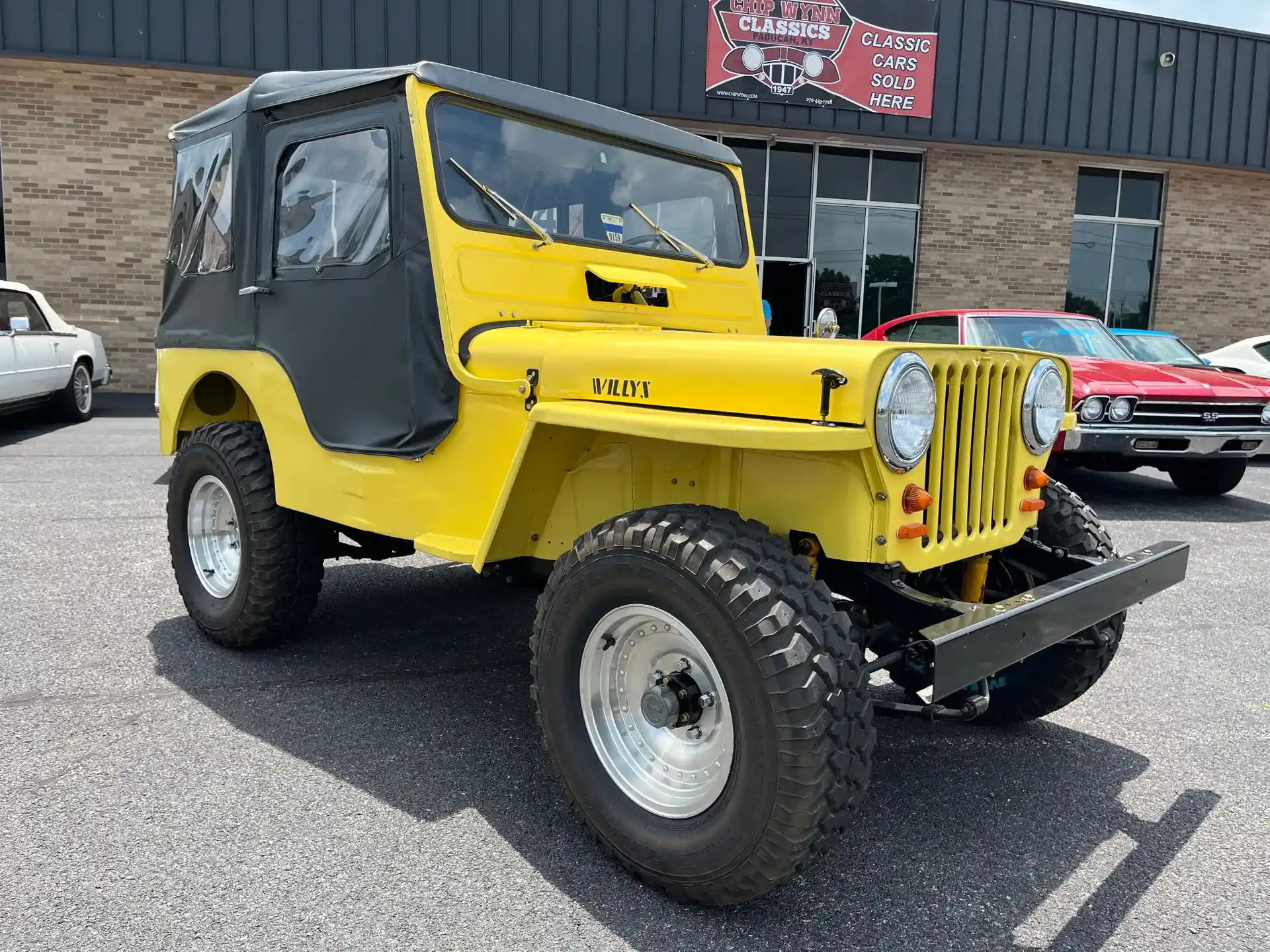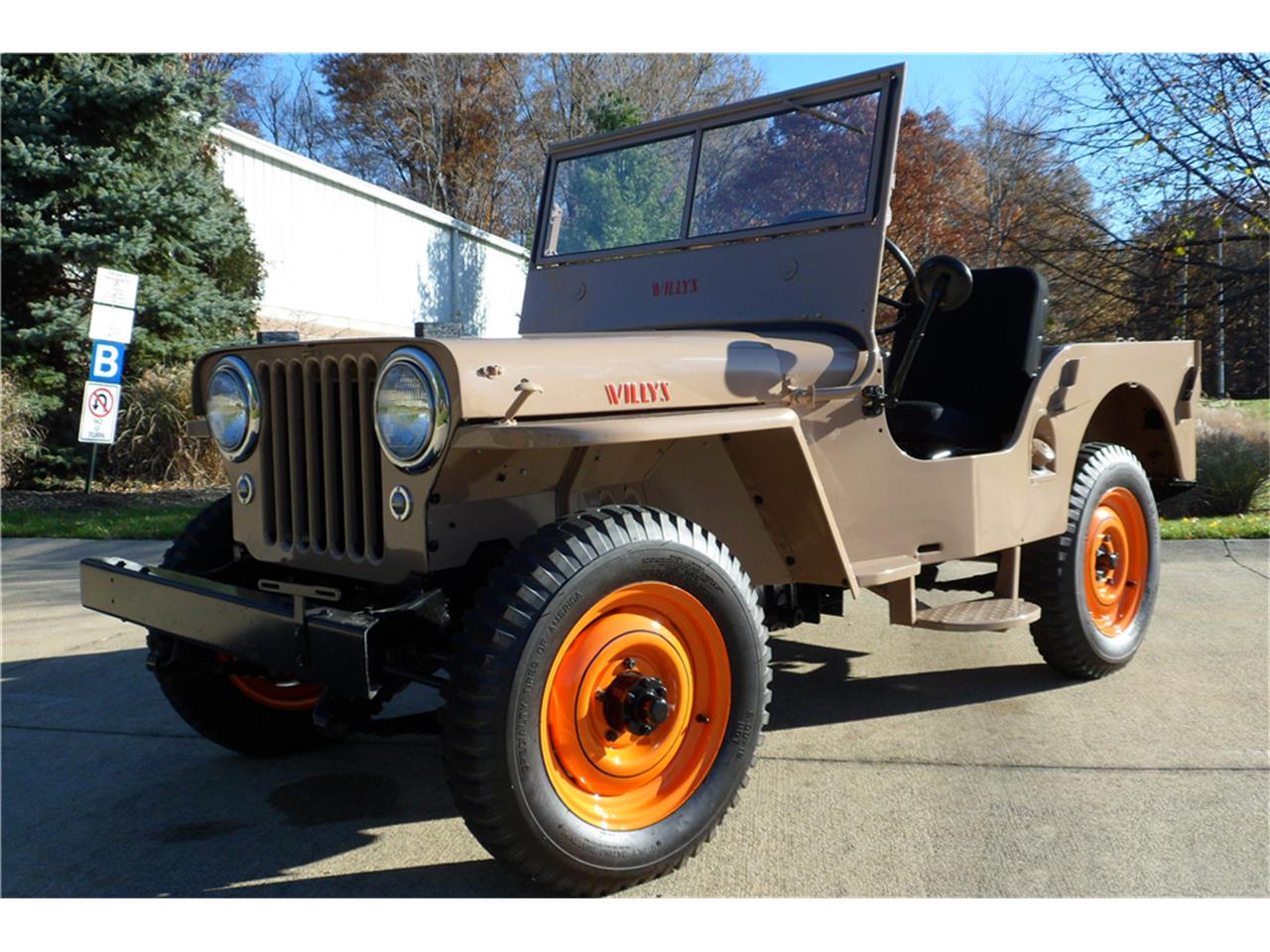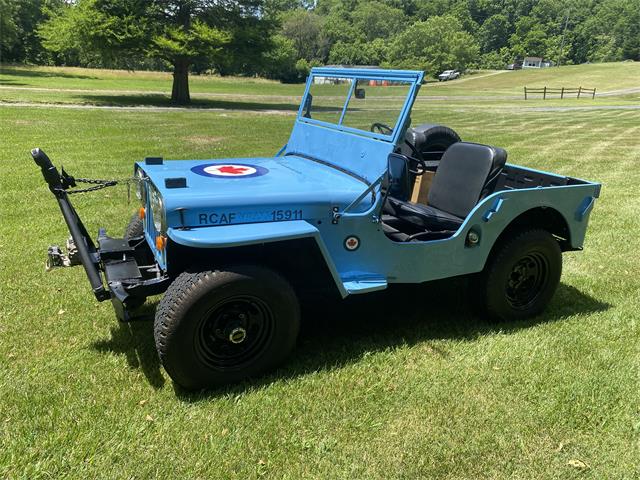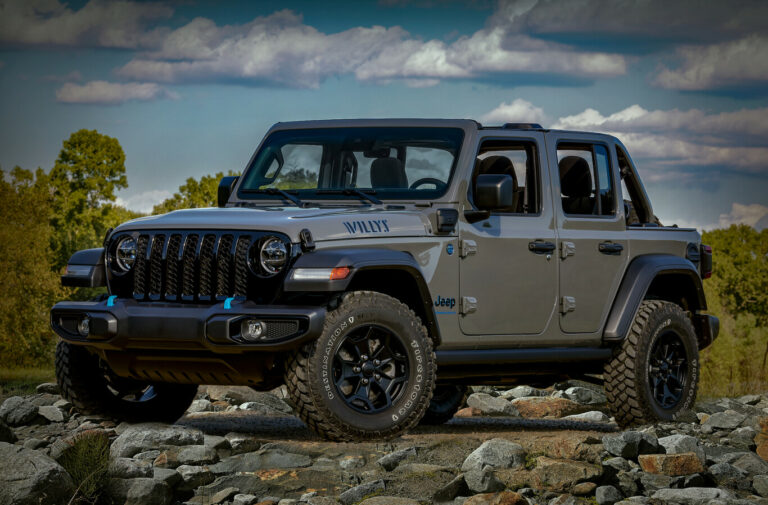1948 Jeep Willys For Sale: Your Guide to Owning an American Icon
1948 Jeep Willys For Sale: Your Guide to Owning an American Icon jeeps.truckstrend.com
The year 1948 marks a unique period in the storied history of the Jeep Willys, representing the civilian iteration of a vehicle that helped win a world war. For sale, a 1948 Jeep Willys isn’t just a used vehicle; it’s a tangible piece of American ingenuity, a symbol of rugged independence, and a testament to enduring design. These post-war workhorses, primarily the CJ-2A model with some early CJ-3A production, transitioned from battlefields to farms, construction sites, and adventurous expeditions, becoming the bedrock of the recreational 4×4 movement. If you’re considering purchasing a 1948 Jeep Willys, you’re not just buying a mode of transport; you’re investing in a legacy, a community, and an unparalleled driving experience. This comprehensive guide will navigate you through the exciting journey of finding, evaluating, and ultimately owning your very own piece of automotive history.
The Enduring Appeal and Historical Significance of the 1948 Willys Jeep
1948 Jeep Willys For Sale: Your Guide to Owning an American Icon
The story of the Willys Jeep begins with the urgent demands of World War II, leading to the creation of the legendary MB. After the war, Willys-Overland saw the immense potential for a civilian version, giving birth to the CJ (Civilian Jeep) series. The 1948 model year primarily features the CJ-2A, which was introduced in 1945, and some very early production of the CJ-3A, launched in late 1948.
The CJ-2A quickly earned its nickname, the "Universal Jeep," due to its incredible versatility. It was designed for a multitude of tasks, from plowing fields to powering machinery via its Power Take-Off (PTO) unit. Its simple, robust construction, powerful "Go-Devil" L-head four-cylinder engine, and legendary 4×4 capability made it an instant hit. Owning a 1948 Willys Jeep today means appreciating this simplicity and ruggedness. It’s a vehicle that connects you directly to a pivotal era of American manufacturing and a time when vehicles were built to be repaired, not replaced. Its iconic flat-fender design, exposed hinges, and sparse interior evoke a sense of utilitarian beauty that modern vehicles often lack. For enthusiasts, it’s not just a vehicle; it’s a hobby, a social connector, and for many, a family heirloom in the making.
What to Look For When Buying a 1948 Willys Jeep: A Pre-Purchase Inspection Guide
Acquiring a 1948 Willys Jeep requires a keen eye and a thorough understanding of what makes these vehicles tick. Given their age and typical hard-working lives, condition varies wildly. Here’s a detailed checklist of what to inspect:
- Frame Integrity: This is paramount. Inspect the entire frame for rust, especially near spring hangers, body mounts, and any welded repairs. Look for cracks, bends, or evidence of significant accidents. A compromised frame can be a deal-breaker or require extensive, costly repairs.
- Body Condition: The Willys’ body tub is notorious for rust. Check the floorboards (especially under the driver’s and passenger’s feet), hat channels (underside supports), fender wells, and the tailgate. Look for excessive bondo or poor patch panel work. Reproduction tubs are available but original steel is preferred by purists.
- Engine (Go-Devil L-Head Four-Cylinder): The 2.2L (134 cu in) "Go-Devil" engine is robust but inspect for oil leaks, excessive smoke from the exhaust (blue for oil, white for coolant), and listen for knocks or unusual noises. Check oil pressure and coolant levels. Originality of the engine (matching numbers or period-correct) can impact value.
- Transmission (T-90 3-Speed Manual): Test all gears, including reverse. Listen for grinding, popping out of gear, or excessive noise.
- Transfer Case (Dana 18): Ensure both 2WD and 4WD (high and low range) engage smoothly. Check for leaks around the seals.
- Axles (Dana 25 Front, Dana 41/44 Rear): Look for leaks at the differential covers and wheel ends. Listen for howling or grinding noises during a test drive, which could indicate worn bearings or gears.
- Steering & Suspension: Check for excessive play in the steering wheel. Inspect leaf springs for sagging or broken leaves. Look at shackles and bushings for wear. Shocks are often worn or missing.
- Brakes: These are typically drum brakes all around. Check for fluid leaks, spongy pedal feel, or pulling to one side. Be prepared for potentially weak braking performance compared to modern vehicles.
- Electrical System (6-Volt): The original 6-volt system can be finicky. Check all lights, gauges, and the starter. Look for frayed or patched wiring, which can be a fire hazard. Many have been converted to 12-volt, which is a common upgrade for reliability.
- Interior: The interior is spartan. Check the condition of the seats, steering wheel, and original gauges. Authenticity here is key for collectors.
- Documentation: A clear title is absolutely essential. Any service records or history of ownership can add value and provide peace of mind. Verify the VIN matches the title and the vehicle.


Actionable Insight: If you’re not mechanically inclined, invest in a pre-purchase inspection (PPI) by a classic Jeep specialist. Their expertise can save you thousands in unforeseen repairs.

Understanding the Different States of Restoration
The price and amount of work required for a 1948 Willys Jeep are directly tied to its current state. Understanding these categories will help you set realistic expectations:
- Barn Find / Project: These are often non-running, incomplete, or heavily rusted vehicles. They represent the lowest purchase price but require the most significant investment of time, money, and skill. Ideal for a dedicated enthusiast looking for a long-term restoration project.
- Driver Quality: A running, driving vehicle that is generally complete and safe for road use, but may have cosmetic flaws, minor mechanical quirks, or areas needing attention. These are great for someone who wants to enjoy the vehicle immediately and improve it over time.
- Partially Restored: Some major components (e.g., engine, transmission, body) may have been restored, but others remain untouched. This can be a mixed bag; ensure the "restored" parts were done correctly and don’t assume the rest of the vehicle is in similar condition.
- Fully Restored (Concours/Show Quality): These vehicles have undergone a meticulous, frame-off restoration, often to original factory specifications. Every component is new or reconditioned, and the paint and bodywork are flawless. They command the highest prices and are typically show vehicles rather than daily drivers.
- Restomod: Short for "restored and modified." These Jeeps retain their classic looks but feature modern upgrades like more powerful engines (e.g., V6 or V8), modern transmissions, disc brakes, power steering, and improved suspension. They offer enhanced performance and reliability but sacrifice originality.
Navigating the Market: Where to Find a 1948 Willys For Sale
The hunt for a 1948 Willys Jeep can be an adventure in itself. Here are the most common avenues:
- Online Marketplaces: Websites like eBay Motors, Craigslist, Facebook Marketplace, and specialized classic car sites (e.g., Hemmings Motor News, ClassicCars.com) are excellent starting points. Be wary of scams and always verify sellers.
- Classic Car Dealerships: Some dealerships specialize in vintage vehicles and may have restored Willys Jeeps for sale. While prices might be higher, these vehicles are often vetted and may come with some form of warranty or inspection report.
- Auction Houses: Reputable auction sites like Bring a Trailer, Mecum Auctions, or Barrett-Jackson occasionally feature well-preserved or restored Willys Jeeps. Prices can fluctuate wildly based on buyer interest and rarity.
- Willys/Jeep Clubs and Forums: Joining dedicated Willys Jeep clubs (online or local) is an invaluable resource. Members often sell their vehicles directly, offering more transparency and community support. You might find vehicles not listed elsewhere.
- Word of Mouth: Sometimes the best finds come from unexpected places. Let friends, family, and local mechanics know you’re looking.
Practical Advice: Be patient. The right Willys Jeep at the right price might not appear overnight. Set clear criteria for condition, budget, and desired features, and stick to them.
Key Considerations Before Purchase
Beyond the vehicle itself, there are several practical aspects to consider before pulling the trigger:
- Budget Beyond Purchase Price: Remember that the purchase price is just the beginning. Factor in costs for transport, insurance, registration, and immediate maintenance/repairs. If buying a project, budget for parts and labor.
- Intended Use: Will it be a show vehicle, a weekend cruiser, an off-road toy, or a static display? Your intended use will dictate the level of restoration and features you need. A 1948 Willys is generally not suited for daily driving, especially on modern highways.
- Mechanical Aptitude: These vehicles are mechanically simple, making them excellent for the DIY enthusiast. However, if you lack mechanical skills, be prepared to pay for professional servicing, which can add up.
- Storage: A classic vehicle needs proper storage. A dry, secure garage is ideal to prevent rust and protect your investment.
- Legalities: Ensure the vehicle has a clear, transferable title in your state. Some older vehicles may have lost their titles, creating headaches for registration.
The Joy of Ownership
Owning a 1948 Willys Jeep is an experience unlike any other. It’s a connection to history, a conversation starter wherever you go, and an invitation into a passionate community of enthusiasts. The simple, mechanical nature of these vehicles means that many repairs can be done with basic tools, fostering a rewarding sense of accomplishment. Whether you’re cruising country roads, tackling light trails, or just tinkering in the garage, the Willys offers a unique blend of nostalgia, utility, and pure driving fun.
1948 Jeep Willys For Sale: Estimated Price Guide
Please note that these prices are estimates and can vary significantly based on location, specific model (CJ-2A vs. rare early CJ-3A), historical documentation, and the seller’s motivation. This table provides a general range.
| Condition Category | Description | Estimated Price Range (USD) | Key Factors Influencing Price |
|---|---|---|---|
| Project/Barn Find | Non-running, incomplete, significant rust, major mechanical issues. Requires full restoration. | $2,000 – $8,000 | Extent of rust, completeness, presence of original engine/transmission, clear title. |
| Driver Quality | Running, driving, roadworthy but with cosmetic flaws, minor mechanical issues, or older restoration. | $8,000 – $20,000 | Reliability of mechanicals, overall appearance, safety features (brakes, lights), amount of immediate work needed. |
| Partially Restored | Key components (e.g., engine, body) have been addressed, but other areas need attention. | $15,000 – $30,000 | Quality of previous restoration work, remaining work needed, originality of components. |
| Fully Restored | Meticulously restored to near-original condition, show-quality paint, solid mechanicals. | $30,000 – $55,000+ | Authenticity, quality of restoration, period-correct details, documentation, low post-restoration mileage. |
| Restomod | Original body/frame but with modern drivetrain, suspension, brakes, etc. Enhanced performance/comfort. | $25,000 – $60,000+ | Quality of modern upgrades, donor vehicle components, professional build vs. DIY, overall fit and finish. |
Disclaimer: Prices are highly subjective and market-dependent. Always conduct your own research and consider a professional appraisal.
Frequently Asked Questions (FAQ) about 1948 Jeep Willys For Sale
Q1: Is a 1948 Willys Jeep a good daily driver?
A1: Generally, no. While incredibly robust, they lack modern safety features, comfort, and highway speed capabilities. They are best suited for weekend cruising, light off-roading, or as a show vehicle.
Q2: Are parts for a 1948 Willys Jeep still available?
A2: Surprisingly, yes! There’s a thriving aftermarket for Willys Jeep parts, including reproduction body panels, mechanical components, electrical systems, and even complete frames. Many original parts can also be sourced through specialty vendors or used parts dealers.
Q3: What kind of fuel economy can I expect?
A3: The "Go-Devil" engine, while reliable, is not fuel-efficient by modern standards. Expect anywhere from 15-20 miles per gallon, depending on driving conditions and vehicle tune.
Q4: Can a 1948 Willys Jeep still go off-road?
A4: Absolutely! Its light weight, short wheelbase, and robust 4×4 system make it highly capable off-road. However, modern tires and a cautious approach are recommended, as original components may not withstand extreme abuse.
Q5: Is it difficult to work on a 1948 Willys Jeep?
A5: For those with basic mechanical knowledge, they are relatively simple to work on. Their design is straightforward, with easily accessible components and fewer complex electronics than modern vehicles. Manuals and online resources are abundant.
Q6: What’s the difference between a CJ-2A and a CJ-3A for 1948?
A6: The 1948 model year is primarily CJ-2A. The CJ-3A was introduced in late 1948. The main visible difference is the CJ-3A’s taller windshield, which was fixed in place and incorporated a cowl vent. Mechanically, they are very similar.
Q7: Should I convert the 6-volt electrical system to 12-volt?
A7: Many owners choose to convert to 12-volt for easier starting, brighter lights, and compatibility with modern accessories. While not strictly necessary if the 6-volt system is in good condition, it’s a popular and practical upgrade.
Conclusion
The appeal of a "1948 Jeep Willys For Sale" extends far beyond its four wheels and rugged chassis. It represents a piece of living history, a gateway to a vibrant community, and an opportunity to experience driving in its purest, most unadulterated form. Whether you’re a seasoned collector or a first-time classic car buyer, careful research, a thorough inspection, and a clear understanding of your intentions are crucial. Owning a 1948 Willys Jeep is more than just a purchase; it’s an embarkation on a unique journey, one filled with character, connection, and the undeniable charm of an American legend. Prepare to turn heads, answer questions, and most importantly, enjoy the ride.


